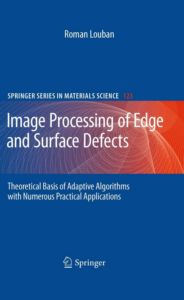The edge and surface inspection is one of the most important and most challenging tasks in quality assessment in industrial production. Typical defects are cracks, inclusions, pores, surface flakings, partial or complete tears of material surface and s.o. These defects can occur through defective source material or through extreme strain during machining process.Detection of defects on a materialc surface can be complicated due to extremely varying degrees of material brightness or due to shadow areas, caused by the folding of the surface. Furthermore, impurities or surface discolourations can lead to artefacts that can be detected as pseudo-defects. The brightness conditions on the edge of material defects are interpreted as a Gauss distribution of a radiation and used for a physical model. Basing on this model, an essentially new set of adaptive edge-based algorithms was developed. Using these methods, different types of defects can be detected, without the measurements being dependent on local or global brightness conditions of the image taken. The new adaptive edge-based algorithms allow a defect detection on different materials, like metal, ceramics, plastics and stone.These methods make it possible to explicitly detect all kinds of different defects independently of their size, form and position and of the surface to be inspected. The adaptive edge-based methods provide a very wide spectrum of applications.
In Collection
#5698
Read It:
Yes
#5698
Read It:
Yes
Computers / Computer Graphics / Image Processing, Science / Optics, Science / Solid State Physics, Technology & Engineering / Engineering (General), Technology & Engineering / Material Science
|
|
||||||||||||||||||
